Cosco BC112 Operating instructions
- Category
- Car seat
- Type
- Operating instructions
This manual is also suitable for

Forward Facing: 22-40 lb and 34-43 in.
(10.1-18 kg and 85.1-110 cm)
Belt-Positioning Booster: 40-80 lb and 43-52 in.
(18.1-36.3 kg and 110.1-132.1 cm)
KEEP INSTRUCTIONS FOR FUTURE USE.
Read all instructions before using this child restraint.
HIGHBACK 2-in-1
BOOSTER CAR SEAT
Failure to follow the warnings on the labels and in the
instruction manual can result in serious injury or death
to your child.
LATCH
Page 18
TETHER
Page 23
To see installation videos, scan the QR
Code or visit coscokids.com.
FUNSMARTSIMPLE
©2015 Dorel Juvenile. All Rights Reserved.
4358-6742 4.24.15
4358-6742 Highback.indd 1-24358-6742 Highback.indd 1-2 4/24/15 4:34 PM4/24/15 4:34 PM

Important Symbols
Choosing Forward Facing or Booster Seat
Your child’s height, weight, and age determine how your child
restraint should be placed in the vehicle.
WARNING: Verify your child’s weight and height (do
not guess) before choosing the child restraint’s position.
LATCH
See page 18 for LATCH information and storage
location.
Vehicle Belts
See pages 19-20 for vehicle belt information.
Tether
See page 23 for Tether information.
Instruction Manual Storage
See page 2 for storage location.
To help you recognize instructions which are most
critical to your child’s safety, we use this symbol.
Failure to follow these warnings can result in the
serious injury or death of your child.
Vehicle Belt Install
Page 27
Lap and Shoulder
Belt Install
Page 30
+
FORWARD FACING
with internal harness
22-40 lb (10.1-18 kg)
34-43 in. (85.1-110 cm)
At least 2 years old
BOOSTER SEAT
40-80 lb (18.1-36.3 kg)
43-52 in. (110.1-132.1 cm)
At least 3 years old
See page 3 to
adjust internal
harness system
See page 9 to
remove internal
harness system
LATCH Install
Page 24
+
4358-6742 Highback.indd 3-44358-6742 Highback.indd 3-4 4/24/15 4:34 PM4/24/15 4:34 PM

Table of Contents
Getting Started ................................... 1
Parts of the Child Restraint .................................1
Prepare Child Restraint to Fit Your Child ..............3
How Does Your Child Fit? ...................................4
Changing Position of Shoulder Harness Strap ........5
Securing Child in Child Restraint .........................7
General Use ........................................ 9
Removing Harness System .................................9
Removing Seat Pad for Cleaning .........................11
Installing Harness System ..................................12
Accessories ......................................................14
Safety Information .............................. 15
Child Restraint Use ............................................15
Installation in Vehicle .........................................15
Vehicle Seating Position .....................................16
Vehicle Information ............................. 17
Understanding Your Vehicle ................................17
Choosing LATCH or Vehicle Belts ........................18
Knowing Your Vehicle Belts .................................19
Aircraft Information ...........................................21
Forward Facing ................................... 22
Tether Use ..................................................23
LATCH Installation .......................................24
Vehicle Belt Installation ................................27
Booster Seat ....................................... 29
Lap and Shoulder Belt Installation .................30
Important Information ........................ 31
Using a Locking Clip ..........................................31
Dorel Juvenile Group Information... .....................33
Registration and Safety Notices ..........................34
Troubleshooting .................................................35
Replacement Parts Order Form ...........................36
Warranty ...........................................................38
4358-6742 Highback.indd 5-64358-6742 Highback.indd 5-6 4/24/15 4:34 PM4/24/15 4:34 PM

Parts of the Child Restraint
1 2
Side View
Front View
Back View
J
M
N
L
K
O
B
A
C
D
E
F
G
H
I
J. Belt-Positioning
Guide
K. Shell (child restraint)
L. Forward-Facing
Belt Path
M. Tether (see page 23)
N. Instruction Manual
Storage
O. Splitter Plate
A. Shoulder Harness
Slots
B. Harness Strap
C. Chest Clip
D. Buckle
E. Hip Harness Slots
F. Harness Release
Lever (under fl ap)
G. Harness
Adjustment Strap
H. Cup Holder
(see page 14)
I. LATCH
(see page 18)
4358-6742 Highback.indd 7-84358-6742 Highback.indd 7-8 4/24/15 4:34 PM4/24/15 4:34 PM

Prepare Child Restraint to Fit Your Child How Does Your Child Fit?
3 4
1. Fully Loosen Harness
Strap
Push down on harness release lever
(under fl ap on front of seat pad)
while pulling out on harness straps
as shown.
3. Release Chest Clip
Press on chest clip release button
and pull apart.
Place harness straps out of the way.
2. Unbuckle Harness
Press in towards the top of the red
button.
Pull buckle tongues out.
4. Place Child in Child
Restraint to Determine
Proper Harness Fit
The child’s bottom and back should
be fl at against the child restraint.
See page 4 for fi t guidelines.
FORWARD FACING
with Internal Harness
Use the guidelines below to determine if the harness strap
is in the right place for your child.
Always choose the shoulder harness
slot that is closest to your child’s
shoulder height.
Harness strap MUST be at or
slightly above shoulders. To make
changes to the harness strap, see
pages 5-6.
If the highest shoulder harness slots are below the child’s
shoulders, and the child weighs at least 40 lb (18 kg) and is
at least 3 years old, you must convert the child restraint to a
booster seat.
To prepare seat as a booster, see pages 9-10.
4358-6742 Highback.indd 9-104358-6742 Highback.indd 9-10 4/24/15 4:34 PM4/24/15 4:34 PM

Changing Position of Shoulder
Harness Strap
5 6
1. Fully Loosen Harness
Strap
Push down on harness release lever
(under fl ap on front of seat pad)
while pulling out on harness straps
as shown.
2. From Back, Remove
Harness Strap Loops
From Splitter Plate
3. Pull Harness Strap Out of
Shoulder Harness Slots
4. Rethread Harness Strap
into Correct Shoulder
Harness Slots For Your
Child
See page 4 for fi t guidelines.
5. Attach Harness Strap
Loops to Splitter Plate
As Shown
Sewn ends of the harness strap
loops
MUST face towards you.
DO NOT twist harness strap or
harness adjustment strap.
Make sure the loops are fitted
COMPLETELY ON both sides of
the splitter plate.
sewn
end
WARNINGS: Verify frequently that the harness height
is correct for your child’s size. It is very important to read,
understand and follow all instructions and warnings.
Do not use this child restraint forward facing if
the tops of your child’s ears are above the top
of the child restraint.
Failure to follow these steps can result in serious injury or
death.
4358-6742 Highback.indd 11-124358-6742 Highback.indd 11-12 4/24/15 4:34 PM4/24/15 4:34 PM

Securing Child in Child Restraint
7
1. Place Child in Child
Restraint
The child’s bottom and back should
be flat against the child restraint.
Position harness strap over child’s
shoulders and thighs.
3. Close Chest Clip
Insert right half of chest clip into
left half and snap together.
2. Buckle Harness
Push buckle tongues into buckle
until you hear them “click.”
Pull up on harness strap to make
sure buckle is locked.
4. Tighten Harness
Pull on harness adjustment strap to
tighten harness snugly.
8
6. Check Harness Tightness
Try to pinch the harness at the
shoulders vertically between index
finger and thumb as shown.
If your fingers slip off, the harness is
tight enough.
If you can pinch the harness strap, tighten more. The harness
strap should be snug throughout their length.
5. Position Chest Clip
The chest clip must be placed at
mid-chest (even with armpits) and
away from the child’s neck.
WARNINGS:
Failure to fasten and tighten the harness
system correctly may allow the child to be ejected from
the child restraint in a crash or sudden stop causing
serious injury or death.
Do not mistake comfort for safety. Harness system must
be snugly adjusted.
A snug harness strap should not allow any slack. It lies in a
relatively straight line without sagging. They do not press on the
child’s fl esh or push the child’s body into an unnatural position.
To Remove Child From Child Restraint
1. Loosen Harness Strap
2. Unbuckle Harness
3. Release Chest Clip
4. Remove Child
4358-6742 Highback.indd 13-144358-6742 Highback.indd 13-14 4/24/15 4:34 PM4/24/15 4:34 PM

Removing Harness System
109
Only remove the harness system to clean seat pad or when
changing child restraint to a booster seat.
1. Fully Loosen Harness
Straps
Push down on harness release lever
(under fl ap on front of seat pad)
while pulling out on harness straps
as shown.
2. From Back, Remove
Harness Strap Loops
From Splitter Plate
3. Pull Harness Strap Out of
Shoulder Harness Slots
4. Unthread Chest Clip
8. Rotate Metal Retainer
and Push It Up Through
Shell and Pad
9. From Top of Seat,
Pull Buckle Out of Shell
Store the buckle and harness strap in
a safe place for future use.
7. Turn Seat Over
Locate buckle’s metal retainer on
bottom of shell.
6. Pull Harness Strap Out of
Seat
5. Unthread Buckle
Do not unbuckle the buckle.
4358-6742 Highback.indd 15-164358-6742 Highback.indd 15-16 4/24/15 4:34 PM4/24/15 4:34 PM

Removing Seat Pad for Cleaning Installing Harness System
12
1. Release Elastic Straps on
Back and Bottom of the
Shell
2. Remove Pad
Pull pad off the bottom of child
restraint and remove pad.
You must remove the harness system to remove the pad
from the shell. See pages 9-10.
WARNINGS: Do not use child restraint without the seat
pad. Failure to do this can result in serious injury or death.
Cleaning Pad
Machine wash separately with cold water on a gentle cycle. Do not use
bleach. Tumble dry separately for 10-12 minutes on low heat. Remove
immediately.
Cleaning Harness Straps
Spot clean using warm sudsy water and damp cloth.
Replace Pad
Starting from bottom of child restraint, slip pad on shell. Pull harness
adjustment strap through pad. Wrap pad around the top of shell. Attach
all of the elastic straps. Install harness system, see pages 12-13.
1. Insert Buckle’s Metal
Retainer into Slot
Buckle MUST face out.
3. Check Buckle
Pull up on buckle to make sure it is
secured.
The buckle
MUST not pull out.
4. Rethread Harness Strap
With sewn end of harness strap
loop facing the buckle, thread
harness strap down through hip
harness slot.
2. Pull Metal Retainer
Completely Through
Pad and Shell
11
5. Pull Harness Strap Across
Bottom of Shell
Harness strap MUST lay in front
harness adjustment strap as shown.
Push harness strap up through other
hip harness slot.
4358-6742 Highback.indd 17-184358-6742 Highback.indd 17-18 4/24/15 4:34 PM4/24/15 4:34 PM

Accessories
13
WARNINGS: Harness system must be installed
correctly. Failure to follow these steps can result in serious
injury or death.
7. Attach Harness Strap
Loops to Splitter Plate As
Shown
Sewn ends of the harness strap
loops
MUST face towards you.
DO NOT twist harness strap or
harness adjustment strap.
Make sure the loops are fitted COMPLETELY ON both sides of
the splitter plate.
sewn
end
14
Cup Holder
The cup holder can be attached to
either side of the shell.
Pull pad off corner of shell.
Align symbol on cup holder with
symbol on shell.
Hook bottom of cup holder under
edge of shell.
Snap top of cup holder over edge of
shell.
Replace pad.
6. Make Harness Strap Even
Sewn ends of harness strap loops
MUST face each other.
7. Thread Buckle and Chest
Clip
Harness strap ends go through the
back of buckle tongues and through
the chest clip front to back as
shown.
8. Thread Harness Strap
Into Correct Shoulder
Harness Slots For Your
Child
See page 4 for fi t guidelines.
4358-6742 Highback.indd 19-204358-6742 Highback.indd 19-20 4/24/15 4:34 PM4/24/15 4:34 PM

Child Restraint Use Vehicle Seating Position
16
Do not use this child restraint unless the child is 22-80 lb
(10.1-36.3 kg) and 34-52 in. (85.1-132.1 cm).
Never take your child out of the child restraint while the
vehicle is moving.
Never leave child unattended.
Placing your child in a hot child restraint may result in
burns.
Do not use a child restraint with damaged or missing parts.
Do not use cut, frayed or damaged harnesses.
Do not substitute parts or try to modify the child restraint in
any way.
Do not lubricate buckles and fasteners.
Do not use any child restraint accessory except those ap-
proved by Dorel Juvenile Group.
Never allow any child to play with this child restraint; it is
not a toy.
Do not remove or cover up any of the warning labels or
other labels on the child restraint.
Read all instructions for additional warnings.
On the side of the child restraint there is a date of manufac-
ture label. Do not use this child restraint more than 10 years
after the date of manufacture.
Installation in Vehicle
Check the vehicle belt or LATCH belt before each use. Use
only if the belt is tightened properly and locked securely in
place.
This child restraint should be securely belted in the vehicle
even when not in use. In a crash or sudden stop, an unse-
cured child restraint could injure occupants.
Do not use a child restraint that has been in a crash. You
must get a new child restraint.
15
Check the vehicle owner’s manual for more information
about air bag/child restraint use.
Use the child restraint only on vehicle seats that face for-
ward.
Do not use on seats that face the sides or
rear of the vehicle.
Use the center seating position if possible.
For vehicles without a back seat, refer to
your vehicle owner’s manual.
If you are not sure where to place the child restraint in your vehicle,
consult your vehicle owner’s manual, contact Dorel Juvenile Group
Consumer Relations Department, or visit your local Child Passenger
Inspection Station. Go to http://www.safercar.gov/cpsApp/cps/index.
htm to find your closest station.
Children are safer when properly
restrained in rear seating positions
than in the front seating positions.
According to National Highway
Traffi c Safety Administration in-
formation, children in rear seating
positions are statistically safer, whether you have air bags,
advanced air bags, or no air bags at all.
To avoid your child being seriously burned, take the following
precautions:
1. Park in the shade or where sun does not directly hit the child
restraint.
2. Cover the child restraint with a sheet or blanket when not in use.
3. Check for hot seat and buckles before placing child in child
restraint.
To help protect your vehicle seat’s upholstery from damage, use a
single layer towel underneath and behind child restraint.
4358-6742 Highback.indd 21-224358-6742 Highback.indd 21-22 4/24/15 4:34 PM4/24/15 4:34 PM

Understanding Your Vehicle Choosing LATCH or Vehicle Belts
18
LATCH Anchors
Located in the seat bight. (Forward Facing with Internal
Harness Only)
Tether Anchors
For Tether Strap (Forward Facing with Internal Harness
Only)
Vehicle Seat Belts
Your vehicle’s features may be considerably different than those
pictured here.
Seat Bight
Consult your vehicle owner’s manual to help identify your
vehicle’s specifi c features and locations.
The LATCH System
LATCH (Lower Anchors and Tethers for
CHildren) is a universal system for installing
child restraints without using vehicle seat
belts.
The LATCH system can ONLY be used in
vehicles that have the LATCH anchor bars
installed and designated LATCH seating
positions. Most vehicles manufactured after
September 2002 are equipped with LATCH.
Check your vehicle owner’s manual to see
which seating positions may be equipped
with the LATCH system.
When installing this child restraint
with vehicle belts or when using as
a booster seat, the LATCH hooks and
belt MUST be properly stored. To store
LATCH on this child restraint: Thread
LATCH belt through forward facing belt path
and fasten LATCH hooks together behind the child restraint as shown.
Gently pull free end of belt to remove slack.
17
Vehicle Belts
If LATCH is not an option, you must use the
vehicle seat belt system to install the child
restraint.
There are some vehicle belts that will not
work with a child restraint or will require
special attention.
Check your vehicle owner’s manual for specific instructions.
LATCH Anchor
Bars
LATCH Hooks
Adjuster
LATCH Storage
WARNINGS: When used correctly the LATCH or Vehicle
Belts are equally safe.
Do not use both the UAS belt and vehicle belt at the same
time.
4358-6742 Highback.indd 23-244358-6742 Highback.indd 23-24 4/24/15 4:34 PM4/24/15 4:34 PM

Knowing Your Vehicle Belts
20
Review your vehicle owner’s manual for vehicle seat belt use with child
restraints. This is your best source for information concerning your
vehicle.
Not all vehicle belts will work with this child restraint. This child re-
straint must be tightly locked in place at all times. You must determine
if your vehicle’s belts are compatible with this child restraint.
Vehicle Belts
• Automatic/Passive vehicle seat belts
You MUST have a lap belt to install any child
restraint. An automatic (passive) shoulder belt may
or may not have a separate lap belt.
• Do not use with inflatable seat belts
You may need to move the child restraint to another seating location or
use LATCH belts only.
• Vehicle belts in center of the door or side panel
You must move the child restraint to another seating location.
• Vehicle belts that are in front of the seat
bight
You may need to move the child restraint to another
seating location.
• ELR (Emergency Locking Retractor) vehicle belts
These belts only lock in a sudden stop or crash, and do not properly
secure a child restraint alone.
To determine if you have this type of belt, gently pull the belt all the
way out of the retractor (spool), let it return several inches, then pull
on it again. If it moves freely, it is an ELR belt. If it is
locked and will not allow any more belt to come out,
it is a switchable retractor.
If you have an ELR lap and shoulder belt, review the
“Vehicle Latch Plate” section on page 20 to see if
you need a locking clip.
WARNING: ELR lap-only belts MUST NOT be used with this
child restraint.
19
• Switchable Retractor
These belts switch from ELR to ALR (Automatic Locking Retractor). You
MUST have the vehicle belts in the locking mode to use them.
With a switchable retractor, pull the shoulder belt all the way out to
switch the retractor into the ALR mode before tightening.
Feed the slack back into the retractor while tightening.
• ALR (Automatic Locking Retractor)
These belts lock after pulling the webbing out and letting the belt go
back into the retractor an inch or two.
With an ALR belt, pull the belt all the way out before threading through
the child restraint.
Vehicle Latch Plates
• Check Latch Plates
Grasp the tongue portion of the latch
plate (the part that goes inside the
buckle) and pull straight out, in line
with the lap belt.
If the latch plate does not slide up
and down the vehicle belt, you have
a locking latch plate. You should not
need to use a locking clip.
Check your vehicle owner’s manual to determine the best way to lock
a child restraint in place and wether the latch plate or retractor will
accomplish this. If the latch plate slides up and down on the belt, and
you have an ELR retractor, you MUST use a locking clip to install the
child restraint. See pages 31-32.
You may not need to use the locking clip with a switchable or ALR
retractor.
Locking Latch
Plate
Sliding Latch
Plate
4358-6742 Highback.indd 25-264358-6742 Highback.indd 25-26 4/24/15 4:34 PM4/24/15 4:34 PM

Aircraft Information Forward Facing
21
This restraint is certifi ed for aircraft use when used with the
internal harness.
This child restraint is not certifi ed for use in aircraft when
used as a booster seat because aircraft seats do not have
shoulder belts.
Install the child restraint in a window seat to avoid blocking the
aisle. If the aircraft lap belt is too short, ask the flight attendant for
a belt extender.
Use only on forward facing aircraft seats.
Contact the airline for their specific policies.
Some airlines may ask to see a label stating that
this child restraint is certified for aircraft use.
There is an airplane certification label located on
the side of this child restraint as shown.
WARNING: Store LATCH belts and tether strap when
using the aircraft belts.
22
22-40 lb (10.1-18 kg)
34-43 in. (85.1-110 cm)
At least 2 years old
LATCH Belt with Tether
Lap/Shoulder Belt with Tether
Lap Belt with Tether
WARNING: Child MUST be at least 2 years old to use
this child restraint.
Forward Facing Aircraft Installation
For forward facing installation follow
pages 27-28.
4358-6742 Highback.indd 27-284358-6742 Highback.indd 27-28 4/24/15 4:34 PM4/24/15 4:34 PM

Tether Use LATCH Installation
23 24
Always attach, adjust, and secure the top anchorage
(tether) strap when installing the child restraint forward
facing. Tethers improve the installation and stability of
child restraints and reduce the risk of injury.
Attach the tether hook to the tether anchor designated
by your vehicle manufacturer for that seating position.
Check your vehicle owner’s manual for more informa-
tion.
If the seating position does not have a tether anchor,
use a different seating position or see your dealer or a
qualifi ed mechanic and have one installed. The tether
can greatly improve the performance of this child re-
straint.
To loosen: Lift up on tether lock
adjuster and push it towards
tether hook.
To tighten: After the child
restraint is locked into place
with LATCH or vehicle belt, push
down on child restraint and
gently pull on free end of tether.
Pull free
end to
tighten
To Adjust Tether Strap:
Lift up to
loosen
1. Remove LATCH from
Packaging
Pull LATCH belt packaging out of
forward-facing belt path.
Remove LATCH from packaging.
Discard the packaging.
Review your vehicle owner’s manual for LATCH belt use
and designated LATCH locations.
WARNINGS: Do not use LATCH belt along with the
vehicle lap or lap/shoulder belt.
Check LATCH belt before each use. Use only if the belt can
be tightened properly and locked securely in place.
Failure to follow these warnings can result in serious
injury or death.
Safety Tip
Make sure the harness strap fits your child correctly
before installing the child restraint. See pages 3-4.
continued on next page
2. Route LATCH Belt
Through Forward-Facing
Belt Path
Do not twist belt.
LATCH adjuster can be on either
side.
4358-6742 Highback.indd 29-304358-6742 Highback.indd 29-30 4/24/15 4:34 PM4/24/15 4:34 PM

25 26
4. Place Child Restraint
Forward Facing Flush
Against Vehicle Seat Back
3. Finished LATCH Routing
5. Loosely Attach Tether
Hook
Check vehicle owner’s manual for
specific location.
6. Hook LATCH to Vehicle
Anchor
7. Tighten Belt
Place knee in child restraint.
Firmly push down while pulling
shoulder belt or free end of lap belt
to tighten.
8. Tighten Tether
With knee still in child restraint, push
firmly on the back of the seat and
tighten tether strap.
9. Check Belt Tightness
Hold child restraint at the belt path
with your weakest hand.
Push and pull from side to side.
If it moves more than 1 in. (2.5
cm), try pulling the belt tighter, try
reinstalling the child restraint, try
another seating location, or try using
the vehicle belts.
To Release LATCH
Remove child from child restraint.
Remove tension from LATCH belt by
pushing down on side of child restraint
with LATCH adjuster. Then press
adjuster button to loosen belt.
Unhook LATCH from bar by squeezing
spring lever, pushing hook back into the
seat bight and twisting. Then pull it out
of the vehicle seat.
Store LATCH when not in use. See
page 18.
4358-6742 Highback.indd 31-324358-6742 Highback.indd 31-32 4/24/15 4:34 PM4/24/15 4:34 PM

28
Vehicle Belt Installation
WARNINGS: Do not use LATCH along with the vehicle
lap or lap/shoulder belt.
Store LATCH hook and belts when install-
ing with vehicle belts.
Check vehicle belt before each use. Use
only if the belt can be tightened properly
and locked securely in place.
Failure to follow these warnings can result in serious
injury or death.
1. Place Child Restraint
Forward Facing Flush
Against Vehicle Seat Back
2. Loosely Attach Tether
Hook
Check vehicle owner’s manual for
specific location.
Safety Tip
Make sure the harness strap fits your child correctly
before installing the child restraint. See pages 3-4.
27
3. Route Vehicle Lap or
Lap/Shoulder Belt
Through Forward-Facing
Belt Path
Review pages 19-20 and your
vehicle owner’s manual to determine
what kind of vehicle belts you have and how to lock a child
restraint in place.
Do not twist belt. Buckle vehicle belt.
5. Tighten Tether
With knee still in child restraint, push
firmly on the back of the seat and
tighten tether strap.
4. Tighten Belt
Place knee in child restraint.
Firmly push down while pulling
shoulder belt or free end of lap belt
to tighten.
6. Check Belt Tightness
Hold child restraint at the belt path
with your weakest hand.
Push and pull from side to side.
If it moves more than 1 in. (2.5 cm),
try pulling the belt tighter, try
reinstalling the child restraint, try another seating location, or
switch to using the LATCH belt.
4358-6742 Highback.indd 33-344358-6742 Highback.indd 33-34 4/24/15 4:34 PM4/24/15 4:34 PM

29 30
Booster Seat Lap and Shoulder Belt Installation
Lap/Shoulder Belt
You MUST remove the harness system to use as a booster
seat. See pages 9-10.
WARNINGS: Do not use the harness system when
using as a booster seat.
Do not use this booster seat if the tops of your
child’s ears are above the top of the booster
seat.
Use only the vehicle’s lap and shoulder
belt system when restraining the child in
this booster seat.
Do not use only the lap belt when using
this seat as a booster seat.
The shoulder belt must always be adjust-
ed snugly across the child’s chest. NEVER
place the shoulder belt under the child’s
arms.
Do not use the LATCH belts or tether strap
when using as a booster seat.
Store both LATCH and tether strap as
shown.
Failure to follow these warnings can
result in serious injury or death.
1. Place Booster Seat
Forward Facing Flush
Against Vehicle Seat
Back
Tuck the tether hook and strap under
the booster seat.
2. Position Lap Belt on Child
The lap belt should lay snugly across
the child’s upper thighs and not on
the stomach.
3. Buckle Vehicle Belt
4. Position Shoulder Belt
on Child
Pull up on shoulder belt to tighten.
The shoulder belt should lay snugly
across the center of the child’s
shoulders and across the chest and not
on the face or neck.
To help position the shoulder belt, you
may need to secure the shoulder belt
in one of the notches in the shoulder
belt-positioning guides.
NOTE: Use the shoulder belt positioning guide only if necessary to
correctly position the shoulder belt on the child. Check periodically
to ensure your child has not moved out of position and loosened
the shoulder belt.
40-80 lb (18.1-36.3 kg)
43-52 in. (110.1-132.1 cm)
At least 3 years old
4358-6742 Highback.indd 35-364358-6742 Highback.indd 35-36 4/24/15 4:34 PM4/24/15 4:34 PM

Using a Locking Clip
3. Position Locking Clip
It should be about 1 in. (2.5 cm) from
vehicle belt’s latch plate.
4. Rebuckle Vehicle Belt
6. Tighten Tether
With knee in child restraint, push
firmly on the back of the seat and
tighten tether strap.
1 in.
(2.5 cm)
5. Check Belt Tightness
Hold child restraint at the belt path
with your weakest hand.
Push and pull from side to side.
If it moves more than 1 in. (2.5 cm),
try reinstalling the child restraint or try
another seating location.
31
32
You will rarely need to use a locking clip except in some older
vehicles.
Built-in child restraint locking systems have been required in
vehicles since 1996, and many vehicles had these features
even earlier. Review pages 19-20 and your vehicle owner’s
manual to determine if your vehicle belts require a locking clip.
If you need a locking clip immediately, they are likely available at
an auto dealership, an auto store, or where you purchased this
child restraint. You can also email us at [email protected]
or call us at 1-800-544-1108 for one.
A locking clip will not fix all types of seat belt problems. You
MUST have a lap and shoulder belt to use a locking clip.
Do not use the locking clip when using this seat as a
booster seat.
For Forward Facing installation, follow Pages 27-28
Warnings and Steps 1-4 before starting locking clip installation.
1. Determine Locking Clip Position
Grasp both vehicle belts together just
behind the latch plate to mark the
position for locking clip.
Unbuckle the belt.
NOTE: If the latch plate ends up just
at the belt path opening so you
cannot grasp the vehicle belt at the
latch plate, grasp the vehicle belts
on the opposite side of the child
restraint, as close to the latch plate
as possible.
2. Attach Locking Clip
Thread both portions of the vehicle
belt onto the locking clip, as close to
the latch plate as possible.
Remove the locking clip when the seat belt is not being
used with a child restraint.
4358-6742 Highback.indd 37-384358-6742 Highback.indd 37-38 4/24/15 4:34 PM4/24/15 4:34 PM

34
Dorel Juvenile Group Information Registration and Safety Notices
AB123CDE COSCO HIGHBACK 2-in-1
33
If you don’t have the card or if your
address changes, you will find the
model number, manufacture date, and
line code on the label located on side
of shell.
Example of model number, manufacture date, and line code.
Please complete the postage-paid registration card that came
with your child restraint, and send it to us. Child restraints could
be recalled for safety reasons. You must register this restraint to
be reached in a recall. Send your name, address, email address
if available, and the restraint’s model number and manufactur-
ing date to:
Dorel Juvenile Group, Inc.
Consumer Relations Department
PO Box 2609
Columbus, IN 47202-2609
or call 1-800-544-1108 or register online at www.djgusa.com/
registration/carseat/us.
For recall information, call the U.S. Government’s Vehicle Safety
Hotline at 1–888–327–4236 (TTY: 1–800–424–9153), or go
to http://www.NHTSA.gov.
Model
Number
Line
Code
Manufacture
Date
Thank you for choosing this child restraint. The DJG family is
committed to creating child restraints with the most comfort and
convenience available today.
Remember, parents are a child’s first teachers and examples.
If you always buckle your seat belt, your child will think it is the
natural thing to do.
Make it a firm rule that the vehicle does not go until everyone is
buckled up. Make no exceptions.
No one can predict if use of a child restraint will prevent injury or
death in a particular crash. However, when combined with care-
ful driving, proper use of a child restraint can lower a child’s risk
of injury or death in most crashes.
Your child’s safety is worth the time it will take to read and fol-
low these instructions. After reading, if you still have questions
or have any concerns with this child restraint, please contact our
Consumer Relations Department at:
Website: www.coscokids.com
Email: [email protected]
Telephone: 1-800-544-1108
M-TH from 8 A.M. to 6 P.M. EST
FRI from 8 A.M. to 4:30 P.M. EST
Mailing Address:
Dorel Juvenile Group, Inc.
Consumer Relations Department
P.O. Box 2609
Columbus, IN 47202-2609
Fax: 1-800-207-8182
4358-6742 Highback.indd 39-404358-6742 Highback.indd 39-40 4/24/15 4:34 PM4/24/15 4:34 PM
Page is loading ...
Page is loading ...
-
 1
1
-
 2
2
-
 3
3
-
 4
4
-
 5
5
-
 6
6
-
 7
7
-
 8
8
-
 9
9
-
 10
10
-
 11
11
-
 12
12
-
 13
13
-
 14
14
-
 15
15
-
 16
16
-
 17
17
-
 18
18
-
 19
19
-
 20
20
-
 21
21
-
 22
22
Cosco BC112 Operating instructions
- Category
- Car seat
- Type
- Operating instructions
- This manual is also suitable for
Ask a question and I''ll find the answer in the document
Finding information in a document is now easier with AI
Related papers
-
Cosco FINALE DX Instructions Manual
-
Cosco Scenera Next User manual
-
Cosco Scenera Next User manual
-
Cosco APT 50 Instructions Manual
-
Cosco Backless Pronto User manual
-
Cosco 22493 User manual
-
Cosco EASY ELITE Installation guide
-
Cosco EASY ELITE Instructions Manual
-
Cosco APT 50 User manual
-
Cosco IC178 Operating instructions
Other documents
-
Columbia THERAPEDIC 2000 Instructions For Use Manual
-
Columbia Spirit APS 2400 Instructions Manual
-
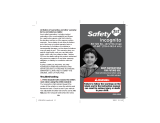 Safety 1st Incognito User manual
Safety 1st Incognito User manual
-
Maxi-Cosi Mico User manual
-
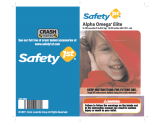 Safety 1st Alpha Omega Elite Infant car seat User manual
Safety 1st Alpha Omega Elite Infant car seat User manual
-
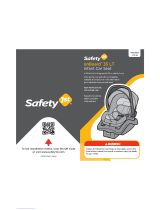 Safety 1st onBoard 35 LT User manual
Safety 1st onBoard 35 LT User manual
-
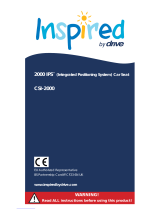 Inspired by drive CSI-2000 User manual
Inspired by drive CSI-2000 User manual
-
Maxi-Cosi Mico Max 30 Instructions Manual
-
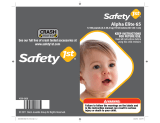 Safety 1st Alpha Elite 65 Infant car seat User manual
Safety 1st Alpha Elite 65 Infant car seat User manual
-
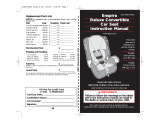 Eddie Bauer Enspira User manual
Eddie Bauer Enspira User manual



























